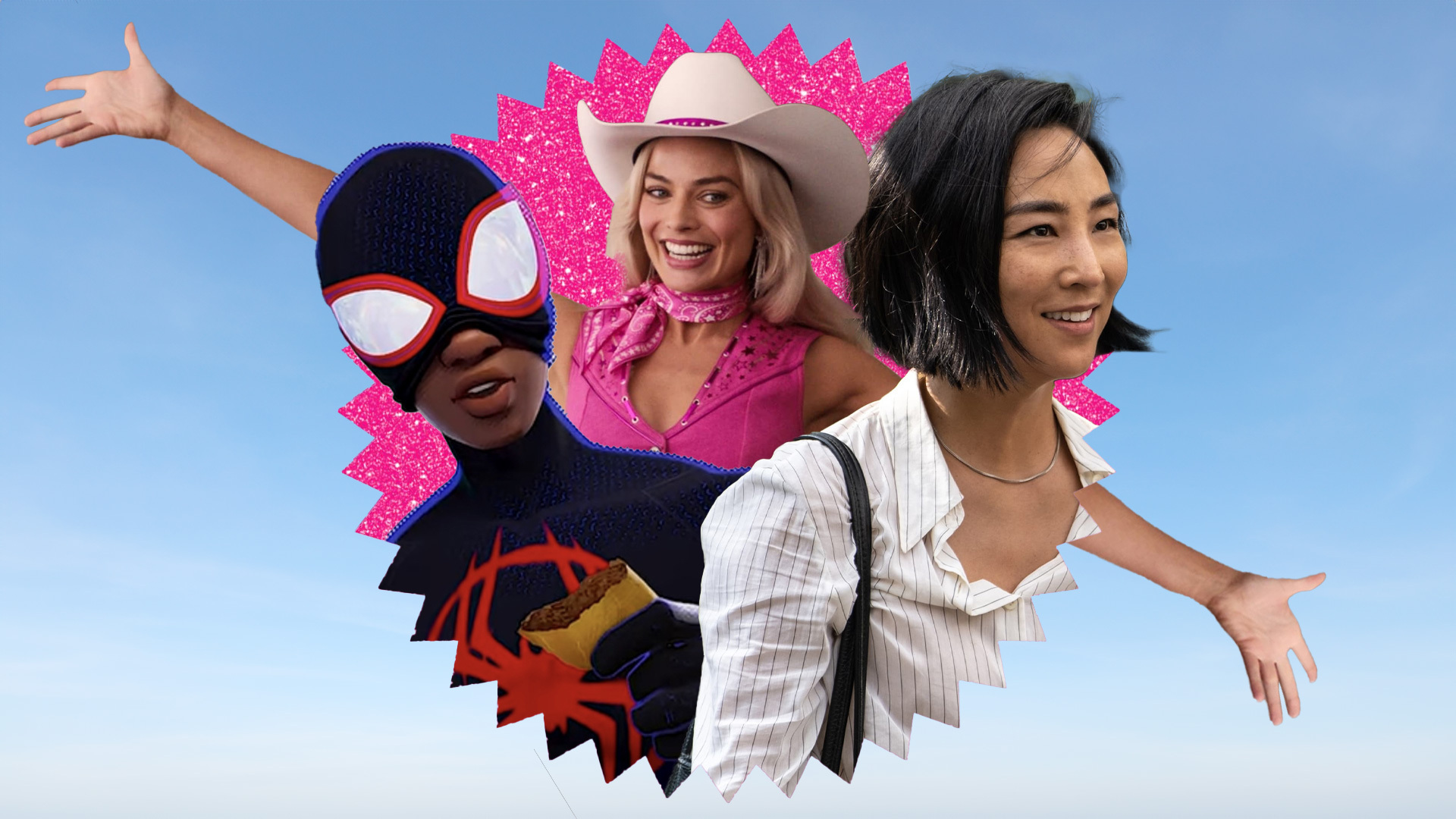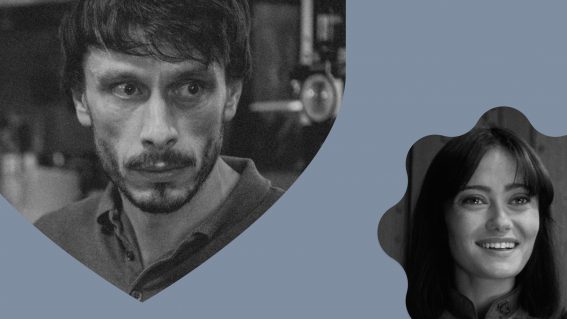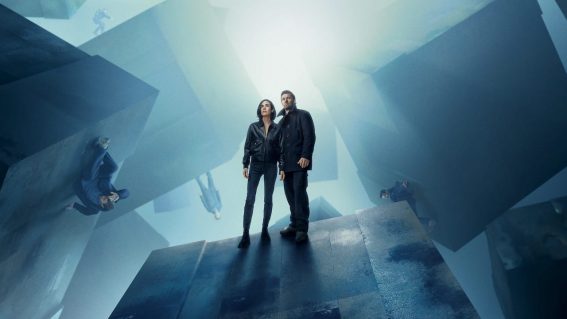Our 20 favourite movies of 2023 – and where to watch them

Flicks writers from Australia, New Zealand and the United Kingdom join forces and count down their top twenty films of the year.
It’s been a big ol’ year. Even with the huge disruption of Hollywood strikes, there’s been a huge amount of quality movies to see—and here we take on the unenviable, highly subjective challenge of ranking the best of the best. Read on and find out where you agree or object to our top twenty of 2023, a list that includes movies we saw at film festivals, general cinema release or streaming.
In putting this top twenty list together, our writers were asked for a list of at least ten films, with 100 points to allocate across their picks (and a maximum of 40 points per film). With the resulting lists aggregated into one, this methodology allowed our writers to champion the films released in cinemas or on streaming this year that they felt most passionate about, and the results reflect a great year of movie-watching—with plenty of recommendations for readers.
Writers from Australia, New Zealand and the United Kingdom contributed to these final rankings. Collectively, their lists featured a staggering total of 79 films, speaking to the vast amount of strong releases this year. This top twenty reflects where they found (some) agreement—and as with last year, it’s interesting to see that no one film appeared on every single list.
A big thanks to everyone at Flicks who submitted lists: Amelia Berry, David Michael Brown, Dominic Corry, Lillian Crawford, Adam Fresco, Eliza Janssen, Liam Maguren, Steve Newall, James Nokise, Katie Parker, Amanda Jane Robinson, Stephen A Russell, Daniel Rutledge, Sarah Thomson and Tony Stamp.
Where possible, each entry quotes from Flicks coverage published at the time of release.
20. Spider-Man: Across the Spider-Verse Part One
Spider-Man: Across the Spider-Verse
Perhaps it was the weight of expectation after the first Spider-Verse pic, or maybe it was the incomplete ending (sadly not the first “Part One” that withheld narrative closure this year)… Something held this sequel back from scaling the same best-of list heights as its predecessor. That’s not to accuse Across the Spider-Verse Part One of lacking humour, thrills, stunning aesthetic, or memorable sequences. Hardly short on ambition, sometimes it might have been a little too much, if anything.
The pic was described as “the most animated movie to hit cinemas” in Liam Maguren’s review. While he found plenty to praise in what he called a gargantuan beast of a big-screen experience, Maguren also notes how “this sequel to Sony Animation Studio’s game-changing Oscar-winner revels in excess—to its benefit and detriment”.
19. Monster
Monster (Kaibutsu)
This latest drama from Palme d’Or winner Kore-eda Hirokazu (Shoplifters) features a mother who notices her son behaving strangely. Feeling something is wrong, she approaches her son’s school in search of answers—the picture becoming clearer to the viewer as events are revealed from various perspectives.
As Daniel Rutledge concluded after seeing Monster at the NZ International Film Festival: “Kore-eda Hirokazu is very much back on form after his somewhat disappointing Broker with this masterful, nuanced and deeply beautiful drama. A Rashomon-style multi-perspective narrative with plenty of mystery to enjoy, this also very cleverly plays our own assumptions against us.”
18. Anatomy of a Fall
This year’s Palme d’Or winner (Justine Triet joining Jane Campion and Julia Ducournau as just the third woman director to win) is a great lesson in ambiguity—a patient French procedural that ushers us into the domestic life of a family soon upended by a tragic death. As authorities take an interest, the circumstances remain unclear to both the viewer and onscreen investigators, even as charges are brought and the action moves into the courtroom. In one of the year’s strongest performances, Sandra Hüller is riveting as the accused.
Reviewing Anatomy of a Fall at Cannes this year, Rory Doherty writes: “It’s refreshing to see one of cinema’s most respectable awards (the Palme d’Or, not the Palm Dog) go to not just an artistically executed procedural, but one that mines the emotional depth of its characters without sacrificing any of the details of France’s prosecution and court system.”
17. Dungeons & Dragons: Honour Among Thieves
Dungeons & Dragons: Honour Among Thieves
If you told us at the start of 2023 that this movie would be on our list of faves, our response would probably have been unprintable. Seemingly yet another nostalgia cash-in CGI fest pumped out of the IP extraction machine, in the hands of the directors of underrated comedy Game Night, their D&D pic exceeded expectations. At its best, Honour Among Thieves achieves a good balance of fantasy adventure and comedy, with entertaining performances (including a typically scenery-chewing Hugh Grant).
Not that this is a universally held opinion, though. Travis Johnson’s review not unfairly concludes: “It’s just a little too ironic and self-conscious to be dramatically engaging, and yet too mindful of its source material (and mooted IP value) to really go for broke in the laughs department”.
16. All the Beauty and the Bloodshed
All The Beauty and the Bloodshed
Winner of the Gold Lion at Venice and nominated for an Oscar, All the Beauty and the Bloodshed is Laura Poitras’s documentary portrait of queer photographer and activist artist Nan Goldin. The doco tracks the campaign by Goldin (who disclosed an addiction to OxyContin in 2017) to hold the Sackler family responsible for their role in the opioid crisis. For Goldin, that means contrasting the Sackler’s very public philanthropic contributions to galleries, museums and universities with their personal enrichment from this modern drug epidemic.
“Poitras’ film weaves the photographic past of Goldin with her present-day protests with such delicacy and assured filmmaking, the documentary has you in the palm of its hands within the first half hour,” reported Rory Doherty from the London Film Festival back in 2022 (before the film reached more audiences this year). “By the 75-minute mark, where the two strands start to directly intersect, you’re entranced by the beauty and hardship that’s defined Goldin’s life throughout, and how powerful her empathic abilities are.”
15. Barbie
Greta Gerwig’s exceptionally colourful adaptation of Mattel’s iconic toy character smashed box office records after taking 64 years to find the perfect live-action Barbie and Ken, in the form of Margot Robbie and Ryan Gosling. The results are an intriguing duality, with plenty of material for future theses, according to Luke Buckmaster’s review:
“Gerwig turns what could’ve been milky fish-out-of-water comedy into blockbuster social commentary, making it accessible through glossy aesthetic, broad comedy and a hodgepodge of styles and inspirations. She seems to have embraced the project as a moral and intellectual challenge: to make a production with ethical, empowering messaging that’s also inescapably a marketing exercise for one of the world’s largest toy companies, pedalling a product with a checkered past.”
14. Hello Dankness
Sampling over 550 sources (making this highly unlikely to be seen anywhere outside the festival circuit), filmmaking duo Soda Jerk repurpose clips from the decades—with a heavy emphasis on white American suburbia of the 80s and 90s—to chart the rise of Trump and tracing our stoned reality through to the Jan 6th insurrection. Still with us? That’s a concept expressed a bit more succinctly in the clip above.
“Since their last NZIFF appearance with Terror Nullius, this cut-up/recontextualisation method might feel a little less rare—but not at this scale or complexity, or with such a patient approach to building a narrative that brings in all of the context of its sampled content,” wrote Steve Newall after seeing this at NZ International Film Festival. “Technically staggering, sometimes scathing, funny-as-fuck.”
13. Beyond Utopia
Thoroughly terrifying documentary captures the terror and hopelessness of families attempting a possibly fatal escape from the militarised borders of North Korea (and its cooperative neighbour China). Connecting several stories, a pastor based in South Korea attempts to help families flee—and survive in the process. What unfolds before us is both a terrifying education in what escape really looks like, and a devastating depiction of brainwashing, state cruelty, and misplaced guilt.
“Told with chilling, intimate hidden-cam footage that feels illegal to watch,” Aaron Yap reported from NZ International Film Festival. “Madeleine Gavin’s film is both a breathless on-the-run thriller and an eye-opening crash course in the country’s nightmarish, surreally oppressive dictatorship.”
12. Godzilla Minus One
Arriving late in 2023, the return of Godzilla obliterated all memory of any CGI-powered Hollywood spectacles this year. Set at the closing stages of WWII and into its aftermath, this 37th Godzilla film (the first out of Japan since Legendary Pictures’ MonsterVerse really got rolling) impressed with both its emotional and bombastic aspects. The long-term consequences of war (ruined cities, damaged guilty psyches) ring true here, and when the kaiju action commences, it’s largely depicted from a human perspective—and therefore both awe-inspiring and terrifying.
Nods throughout to the Godzilla legacy, as well as a little Jaws influence creeping in partway, certainly don’t hurt, though this Godzilla can proudly stand tall on its own two, enormous, scaly, feet.
11. The Boy and the Heron
The Boy and the Heron
While shrouded in mystery when announced, Hayao Miyazaki’s latest back-from-retirement film seemed like it was going to be more grounded in reality than many of his other films (its Japanese title How Do You Live? referencing a coming-of-age novel published in 1937). Revealing itself to be heavier on the fantasy than anticipated, The Boy and the Heron is set during WWII, and follows young Mahito’s move to the countryside after his mother’s death. There he discovers an abandoned tower and enters a fantastical world populated with extraordinary creatures, in what feels like another magnificent entry in the Miyazaki filmography.
Contrasting the film with other contemporary animation, Luke Buckmaster’s Flicks review observes: “Miyazaki slows things down and makes things sparkle in different ways, evoking the child in the adult and the adult in the child.”
10. La Chimera
La Chimera
A dishevelled Englishman (Josh O’Connor) with a preternatural ability to uncover 2000-year-old Etruscan artefacts roams 1980s Tuscany in Alice Rohrwacher’s latest. He’s haunted by his own past, even as he pillages the histories of others to earn a living via the black market, in this gorgeously shot pic, one that’s populated by uniformly winning performances. Rohrwacher confidently juggles both joy and melancholy as we are taken on a tour through the physical and psychological ruins of a distant and more recent past.
As Sarah Thomson wrote after seeing La Chimera at NZ International Film Festival: “Beautiful and broken, our band of ‘tombaroli’ (gravediggers) led by a magnetic Josh O’Connor, raid the countryside’s past to provide for their present—both as the many-headed beast and the impossible liminal dream of the film’s title. Stunning.”
9. The Killer
David Fincher’s latest thriller features Michael Fassbender, back from an acting hiatus as Fincher’s titular killer. Bringing bone-dry humour, droll monologues, a steely presence, and precise physicality to the role, the actor proves a great match for Fincher’s clinical precision, the pair elevating their pic above familiar fare—whether that’s in one of the best onscreen fight scenes of the year, or in more conversationally combative moments. Plus, now we know just what sort of person exclusively listens to The Smiths (yeah, a conscience-free psychopath).
As Stephen A Russell notes in his review: “If the basics—the job goes wrong, he suffers the consequences with a blow to the heart and strikes out for vengeance—are as familiar as The Smiths, then it’s Fincher’s gift that he manages to make The Killer feel as fresh as it does while wholesale photocopying the plot of countless stone-cold thrillers.”
8. Beau is Afraid
Ari Aster follows up the horror of Hereditary and Midsommar with this even more perplexing pic, starring Joaquin Phoenix in a deadpan dark comedy that makes viewers chuckle and foolishly ask, “jeez, how much worse can things get?” In a literal depiction of neurosis, paranoia and fear, we see Beau’s world as he does—a dangerous and violent place that justifies withdrawal and paralysis in response. Cooped up in his apartment by the threats outside, later trapped in suburbia by very different means, constantly shackled by a Freudian relationship with his mum, Phoenix’s Beau is riddled with insecurities, a hapless middle-aged child who this modern epic coerces into venturing across the landscape of all his fears…
“Its style-over-substance sensibility and duration, both of which have been denounced as indulgent, are in my mind justified by the story’s deeper themes of creativity and narrative in general,” writes Eliza Janssen in a spoiler-heavy feature picking apart the film’s themes. “It’s practically a three-hour-long panic attack with some uncomfortable laughs thrown in—whether you like it or not, I’m sure Aster is a pretty proud parent.”
7. Past Lives
Two childhood friends, now living continents away, reconnect in Past Lives, Celine Song’s staggeringly assured debut feature. Never overplaying its hand, the consequences of our lives’ choices and the price paid for growing up are shown here in deeply moving fashion as two people dissect their yearning for what might have been. A compelling tale of heartbreak over lost potential that crosses decades and continents, it’ll reach out to you from the screen with quite the emotional punch.
As Aaron Yap’s review says: “It’s quite the remarkable first film for Song, who brings a tender, elegant economy to her storytelling that doesn’t quite prepare you for how much it’ll wipe you out at the closing stretch. This one aches really good, folks. I can’t shake it.”
6. Tár
Cate Blanchett is phenomenal as (fictional) orchestra conductor, classical composer and EGOT winner Lydia Tár in this drama from writer-director Todd Field (Little Children). Smug, controlling and successful, Tár wields her power over others as confidently as her conductor’s baton—but her predilection for young female prodigies and tendency to discard people when she’s done with them cause some ghosts from Tár’s past to threaten her future.
“Once you start to see what the story will tackle, it’s possible to find its dramatic arc uninventive (we have, of course, been inundated with real-life cancellations the past few years), but such a criticism feels reductive,” concludes Rory Doherty’s review: “This isn’t a story about cancel culture, but ego; a tragedy of obsessive paranoia where the guilty party is always, deep down, aware of the kernels of complicity that will ruin them. She bores into those around her like a drill bit, slowly corroding her dependents like a militant virus, and it’s impossible to look away as she spirals ever downward.”
5. Talk to Me
Talk to Me (2023)
This horror sees teenagers taking turns to grasp an embalmed, inscribed hand at séances, holding it and saying “talk to me”—whereupon they’re possessed by a random spirit. Of course, that’s just the beginning… because what could possibly go wrong? Supernatural party games and teen trends may have provided the plots of many horrors, but Talk to Me is one of the strongest entries in whatever you’d like to call this subgenre. Painting a convincing picture of Aussie teen life, establishing a growing sense of dread and jolting when it wants to, Talk to Me doesn’t get bogged down in lore, but whips along, one of the most promising horror debuts in a while.
“It might’ve been slightly oversold to horrorheads as a new height of never-before-seen terror, but at its best, Talk To Me still packs a grisly, dread-inducing impact,” says Eliza Janssen’s review. “It’s even reminiscent of the promise we saw in the debuts of Sam Raimi and Ari Aster, paving the way for bolder, nastier things.”
In a chat with Steve Newall, writer-directors Danny and Michael Philippou told us more about their horror and what inspired it, and perhaps making the new Street Fighter pic. Oh, and nangs too, confirming “All those backyard drug trips are inspirations.”
4. When Evil Lurks
When Evil Lurks
The latest from Terrified director Demián Rugna is a chilling, gory and incredibly tense tale of demonic possession, set in a world where it’s accepted that demons attempt to possess the living (although it happens rarely), and procedures are in place to contain an outbreak. Procedures that only work when they are followed, as opposed to what happens here, when the contagion of a “rotten” begins to spread, with some incredibly graphic results (including suitably goopy practical effects). Before long, rural Argentina finds itself plagued by vicious demons, goading friends and family into killing them—which just spreads the infestation further.
“Rugna establishes a constant sense of edge-of-the-seat tension that’s seldom seen in supernatural horror, says Steve Newall’s review. “That’s not to say this isn’t also a hell of a lot of fun. There’s a lot of pleasure to being held in the grip of this masterful horror, even if it spares no one—even (especially?) children—from its brutality. This really isn’t one for the squeamish…”
3. Killers of the Flower Moon
Earns its long 206-minute runtime as we soak in its horrific true story, brought to life by committed performances and lively, sometimes restlessly creative cinematography. Martin Scorsese’s first Western is a thoroughly bone-chilling account of the murderous violence committed against the Native Americans of Osage Nation by white men in the early decades of the 20th century, all with their sights firmly set on grabbing a piece of the oil revenue that for a brief period, made the Osage one of the wealthiest communities on Earth. Leonardo DiCaprio embodies moral weakness, Robert De Niro utter cruelty, while Lily Gladstone radiates humanity, even as events become increasingly inhuman.
“Killers of the Flower Moon is about whiteness, about the ways it is a construct based on and depending on violence to maintain dominance, and how any power allocated to or enjoyed by other ethnicities is an affront and a threat to its dominion,” noted Rory Doherty’s review from Cannes. “The final five minutes of Killers of the Flower Moon, one of the best codas in any Scorsese work, round up the facts of the case in a way that reminds us that the story of the Osage murders has been wrestled from Native hands since the first bloodshed.”
2. Oppenheimer
Going head-to-head with Barbie, Cillian Murphy leads Christopher Nolan’s all-star biopic (also starring Emily Blunt, Matt Damon, Robert Downey Jr., Florence Pugh etc etc) as the physicist who himself led a team of scientists to develop the atom bomb. This biopic was a remarkably high-earner for the genre, spurred by the combination of the #Barbenheimer phenomenon, Nolan’s involvement, and the higher ticket prices of IMAX cinemas (where Oppenheimer staked its claim to be among the best films to be presented in that format). With a complex, compromised character at its centre, Nolan’s first biopic feels more authentically emotionally grounded than his previous films—we’re left to speculate for ourselves whether that’s because this is “real life” or perhaps more that Nolan sees a lot of himself to relate to in this driven, dictatorial figure…
But there was something big missing from Oppenheimer, according to Luke Buckmaster’s review: “The film could’ve been richer if the director stopped slicing up his drama and configured well-developed moral and intellectual positions. What’s he really saying about nuclear weapons and catastrophic arms races, beyond an inevitably cautionary message—that old one about the genie and the bottle? Was proliferation a historical inevitability? What does Nolan think about the concept of mutually assured destruction (one of the subjects satirised in Kubrick’s great, and still relevant, Dr Strangelove)?”
1. May December
May December
Impressing at film festivals this year from its Cannes debut onwards, and high up lists submitted by Flicks writers in Australia, New Zealand and the UK, some audiences will need to wait until the new year to see May December (a nudge into 2024 for some countries’ general release signalling faith in its awards prospects). Natalie Portman is an actor researching an upcoming role, Julianne Moore the real-life subject of the film that’s to be made, and Riverdale‘s Charles Melton her husband—whom Moore’s character formed a scandalous relationship with when he was an underage teen (go watch some Mary Kay Letourneau interviews after seeing this…).
On one hand, it’s a character-driven drama, with powerhouse performances from Moore and Portman, who go up against each other at full thesp force; on another, it features unexpected moments of comedy (early on, I laughed at three gags in the space of about a minute); and it embraces the OTT to the point where you’d almost expect to hear Moore wail “no more wire hangers!”
Todd Haynes (Carol) expertly juggles drama, thrills, comedy and melodrama as his cast brings their A-game—plenty of May December’s individual components deserve compliments, but it’s Haynes’ mastery of tone and ability to balance seemingly contradictory elements that cement May December’s status as a 2023 standout.
After May December played NZ International Film Festival, Sarah Thomson wrote: “Todd Haynes does Tennessee Williams; Julianne Moore does Mommie Dearest; Charles Melton does mumblecore Brando; and Natalie Portman’s mimicry/doubling chills more than Black Swan. Full of instantly quotable one-liners, May December turns the problematic appeal of tabloid scandal and airport novel true-crime into a camp unravelling of ageing, sexuality, and control.”
From Melbourne International Film Festival, Eliza Janssen observes: “As a vulture-like actress picking Moore’s complex romantic life apart for an upcoming biopic role, [Portman] perfectly understands the heightened mood Haynes is cultivating here.”












































